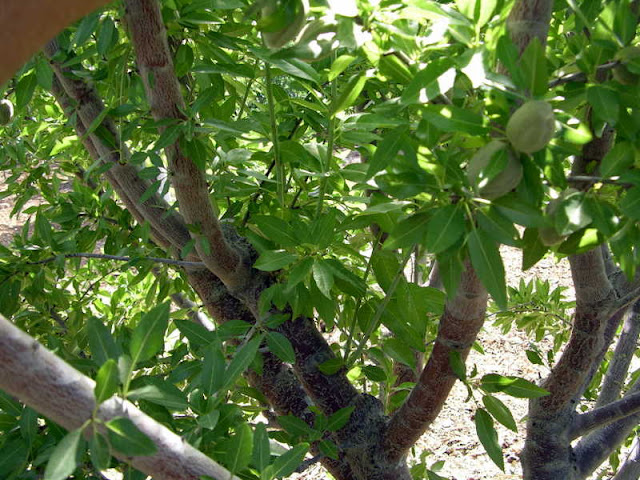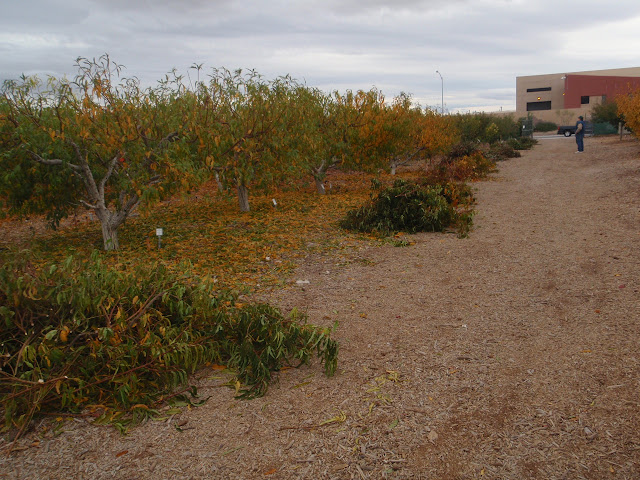Pruning fruit trees properly is a necessary management tool for producing a regular amount of fruit each year, avoid alternate bearing, keep tree size in control for easier harvesting and pest control, and reduce problems of shading and loss of production.
Xtremehort's Pruning Fruit Trees Method
There are three stages for pruning (my stages)…pruning to control size, pruning for structure of the tree and pruning for fruit production. Pruning for size control can be done early in the fall before leaf drop if you have lots of trees to do.
Normally we would combine pruning for structure and fruit production into one step after pruners are experienced. I usually carry both my loppers and hand pruners with me. The first step is to use the loppers. When I finish with my loppers I finish the tree up with a hand shears. Pruning a full-sized fruit tree on close spacing takes me about 5 to 8 minutes per tree.
Why Prune for Size?
Pruning for size control is included because sometimes fruit trees are planted closer together than in old fashioned orchards that let fruit trees reach their full size, The old fashioned way of pruning must use ladders for harvesting and thinning fruit and even pruning! Closer spacing reduces falling from ladders and speeds up harvesting, thinning and spraying.
Spraying fruit trees for pests can be more difficult as well when trees are taller. So these three steps are my invention to make it easier to understand and do. You wont find it discussed as three steps on YouTube (unless they learned it from me). Once fruit trees reach the size you want for production and harvesting then it is important to control their size for their life. This is done through winter pruning and summer pruning.
Start Pruning Early in the Fall When Growth Stops
Pruning can start as soon as leaf drop starts in the Fall. Leaf drop allows the pruner to better see the tree size and shape. If pruning is skipped, after about two or three years fruit production will diminish at the lower heights and only occur at the tops of the trees.
Encourage Early Leaf Drop
To encourage early leaf drop (November) stop watering trees in November. Once leaves begin yellowing from a lack of water, resume normal irrigations. Each year is different but begin turning off the water at the end of October or very yearly November during cool weather.
Summer Pruning
 |
| Summer pruning focuses on removing undesirable new growth in the spring. It is pulled off with your hands when done early enough. Otherwise it must be pruned with a hand shears. |
Why is summer pruning done? Summer pruning helps reduce the amount of winter pruning needed, keeps trees smaller in size, redirects growth where it is needed more and improves production. But it does take time! I usually do it when I am hand thinning,
When is summer pruning done? Summer pruning is a misnomer. It is never done in the summer but I would say from mid spring to late spring depending on the type of tree. Peaches, cherries and apricots are done very early. Apples and late growers are later. If you pick the right time, it can be done with your hands and no pruning shears are needed. If done late, then you will need hand shears.
 |
| If summer pruning is done wrong in the desert, then intense sunlight can damage the tree because of a lack of shade on tender limbs and trunk. |
How is summer pruning done? First of all, it only removes undesirable new growth when its young. This undesirable new growth is an energy investment by the tree in response to light and prior pruning cuts. I focus on pulling off growth going to the inside of the tree and growing straight up mostly. But I also am cognizant of leaving some tender new growth to shade limbs from summer intense sunlight. Summer pruning removes this new growth and it is dropped on the soil where it decomposes. This leaves new growth only where you want it. This remaining growth is pruned and shaped during winter pruning.





No comments:
Post a Comment